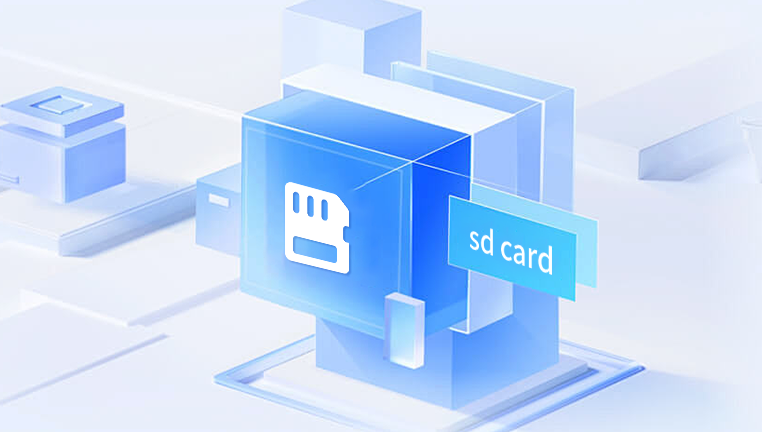An SD card is a small yet powerful storage device used in digital cameras, smartphones, drones, action cams, and even surveillance systems. It stores high-quality videos, precious memories, creative projects, and often irreplaceable footage. So when a video suddenly goes missing or is accidentally deleted from an SD card, it can cause panic and frustration.
What Happens When You Delete Videos from an SD Card?
Many people think that deleting a video erases it forever. In reality, that’s not how SD cards work.
When you delete a video from an SD card, the data is not immediately destroyed. The SD card’s file system marks the video’s space as “available,” and the file becomes invisible to you. However, the actual data remains on the card until it is overwritten by new content.

This window of opportunity is when recovery is most likely to be successful. If you stop using the SD card immediately after deletion and follow the right recovery procedures, you stand a strong chance of retrieving your lost videos.
Common Causes of Deleted Videos from an SD Card
how and why videos are deleted can help you choose the best recovery approach. Here are the most frequent causes:
1. Accidental Deletion
You may have unintentionally selected and deleted a video while reviewing footage.
Deleting videos on a device with a small screen (e.g., GoPro or dashcam) increases the risk of human error.
2. Formatting the Card
Cameras or phones may prompt you to format the SD card if they detect errors.
Quick formatting wipes the file index but not the data itself.
3. File System Errors
Improper ejection, power loss during file writing, or software bugs can lead to file system corruption and loss of video files.
4. Virus or Malware
If your SD card was used in a compromised device or PC, a virus might delete or hide video files.
5. Device Malfunction
Faulty card readers, camera errors, or overheating can lead to partial or full deletion of videos.
First Steps After Deletion
Before you jump into recovery, it’s important to follow some essential precautions:
Stop Using the SD Card
Every new file you save to the SD card increases the chance of overwriting deleted videos. Remove the SD card immediately and do not use it again until recovery is complete.
Do Not Format Again
Even if your camera or device says the card needs to be formatted, avoid doing so unless you're prepared to lose unrecovered data.
Safely Remove the SD Card
Use the “Eject” option on your camera or computer to avoid corrupting the card further.
Tools You’ll Need
To recover deleted videos from your SD card, you’ll need:
A computer (Windows or macOS)
An SD card reader (if your PC doesn’t have one built-in)
Reliable data recovery software that supports video formats
An alternative storage location (USB, hard drive) to save recovered files
Step-by-Step: How to Recover Deleted Videos from an SD Card
Step 1: Insert the SD Card into a Computer
Use a USB SD card reader or insert the card directly if your computer has an SD slot.
Wait for the SD card to appear as a removable drive.
Step 2: Download and Install Recovery Software
Choose recovery software that supports:
SD card recovery
Common video formats (MP4. MOV, AVI, MKV, etc.)
Deep scan mode for thorough searching
Install the software on a drive that’s not your SD card to avoid overwriting data.
Step 3: Launch the Program and Select the SD Card
Open the recovery tool.
Choose the SD card from the list of available drives.
Step 4: Run a Full or Deep Scan
Select the option for a deep scan (sometimes called sector scan or advanced scan).
Let the scan complete—it may take time depending on your card’s size and speed.
Step 5: Preview and Locate Deleted Videos
Most tools let you preview found files.
Filter by video file types (e.g., .mp4. .mov) to narrow results.
Step 6: Recover and Save to a New Location
Select the videos you want to recover.
Save them to your computer or an external drive—not back to the SD card.
Tips for a Successful Recovery
Do not interrupt the scan process even if it takes a while.
Avoid using free tools that limit file size or offer poor results.
Use only trusted recovery software—some lesser-known programs can cause more harm than good.
If videos are fragmented, some tools may not recover full-length footage—look for software with video repair options.
What If the Videos Are Corrupted After Recovery?
Sometimes recovered video files don’t play properly. They may be partially playable, display artifacts, or show error messages.
Causes of Corruption:
File fragments were recovered, but headers were missing.
The card was partially overwritten.
Recovery didn’t complete fully.
How to Fix Corrupted Videos:
Use Video Repair Software
These tools scan the video structure and rebuild broken or missing segments.
Some allow comparison with a sample healthy file to guide repairs.
Try VLC Media Player
Open the video in VLC.
If prompted to repair the video, select “Yes.”
VLC can fix basic index issues for AVI and MP4 files.
Convert the Video Format
Try using a video converter to change the file format.
This sometimes makes corrupted files playable.
Alternative Methods for Recovery
Restore from Backup
Did you copy your videos to a computer, cloud, or external drive? Check:
Google Photos
iCloud
OneDrive
Dropbox
External hard drives
Video editing software (temporary project files)
Recover from the Camera
Some cameras (like Canon or Sony) keep a hidden cache of thumbnails or proxy files. These may be low resolution but can help recover at least partial footage.
Professional Recovery Services
If you’ve tried everything and your videos are still missing—or the card is physically damaged—you may need professional help.
When to Seek Help:
SD card is unreadable or not recognized by any device
Visible damage (cracks, chips, burn marks)
Videos are mission-critical (e.g., wedding footage, professional content)
What Professionals Offer:
Hardware-based recovery in cleanrooms
Chip-level extraction for severely damaged cards
Advanced repair of corrupted or encrypted video files
Though expensive, these services are often the last resort with the highest success rates for damaged cards.
Types of Video Files You Can Recover
Most modern SD cards store videos in standard formats depending on the device:
MP4 – Common for smartphones, cameras, GoPros
MOV – Used by Apple devices and DSLR cameras
AVI – Older format used by camcorders
MKV – Popular with drones and high-resolution cameras
3GP – Common in older mobile phones
MTS/M2TS – Used by HD camcorders (AVCHD)
Recovery tools generally support all of these formats.
How to Prevent Future Losses
Once you recover your videos, you’ll likely want to avoid going through this process again. Here’s how:
1. Back Up Regularly
Copy videos from your SD card to a computer or cloud service after every shoot.
2. Use High-Quality SD Cards
Stick to reputable brands with high write speeds.
Avoid counterfeit or ultra-cheap cards, which are prone to corruption.
3. Format the SD Card in the Device
Always format cards in the camera or device—not in the computer.
This ensures compatibility with the device’s file system.
4. Eject Safely
Always use the "Eject" option before removing an SD card from a computer.
5. Avoid Filling the Card Completely
Keep at least 10–20% of the card empty to prevent file corruption.
6. Keep Cards Clean and Dry
Store cards in protective cases.
Avoid exposure to extreme temperatures, magnets, or moisture.
7. Use Duplicate Cards
If recording critical footage, use cameras that support dual-card recording (mirrored writing).
Frequently Asked Questions
Can I recover videos from a formatted SD card?
Yes. If you performed a quick format, the data is still there and can often be recovered using deep scan. A full format makes recovery much harder.
What if my computer doesn’t recognize the SD card?
Try these fixes:
Use a different card reader.
Try the card in another device.
Check Disk Management (Windows) or Disk Utility (Mac) to see if it appears without a drive letter.
Run command-line utilities like chkdsk to fix minor errors.
Is free recovery software safe?
Some free tools work well, but always be cautious. Read reviews and avoid software with aggressive ads or bundled junkware. Look for software with a preview option before restoring files.
Recovering deleted videos from an SD card may seem daunting, but with the right tools, precautions, and patience, you can often get back what was lost. Whether the video was accidentally deleted, lost due to formatting, or hidden by corruption, your chances of success increase significantly when you act quickly and avoid using the card further.
Remember: digital files are fragile. A backup strategy is your best defense against future video loss. Treat your SD cards with care, store your videos in multiple places, and stay prepared with the knowledge of how to recover them—just in case the unexpected happens.




